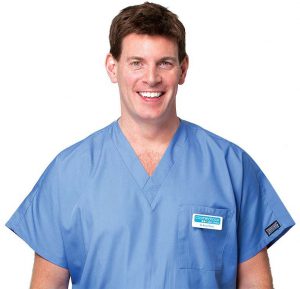The Sun: Expert Advice on Cutaneous Horns
Dr Ross Perry was asked by The Sun to provide his expert medical advice on the issue of cutaneous horns, a condition which, if left untreated, can create extreme and disfiguring skin growths.
The feature started with a dramatic headline:
Stomach-churning pics reveal agony of people blighted by ‘cutaneous horns’ – and how something as innocuous as a tiny cut can trigger it)
The story featured a number of infamous cases that had appeared on the internet, such as the 74 year old Indian farmer who grew a 4 inch cutaneous horn on his scalp after being hit on the head. He had his barber trim it for years until the problem became so large it required surgical treatment.
Other cases included a 101 year old lady who sprouted a pair of horns from her forehead and an 87 year old nicknamed the ‘unicorn woman’ due to a 13cm cutaneous horn growing out of her forehead.
The article explains:
While most of the pictures of extreme cases are from abroad, doctors in Britain see such cases all the time.
What Are Cutaneous Horns?
A cutaneous horn is a type of lesion or growth that appears on the skin. It’s made of keratin, which is a protein that makes up the top layer of the skin. Keratin is also found in nails and hair.
The growth may look like a cone or horn, and it can vary in size. The name comes from the growth sometimes resembling an animal’s horn.
They often occur in older patients in their 60’s and 70’s more commonly in fair skinned people particularly men on the face or hands. They are presumed to be linked to UV sun exposure, however, often the true cause is not known.
60% are benign, so not of any medical concern. However it is always worth getting them checked out in order to rule out cancerous, precancerous or any other underlying issues.
The Sun asked Dr Ross Perry for his input. He explained:
“Each horn is individual and each one is different on the cause.”
He continued:
“Some people can get a viral warty lesion that looks like a definitive cutaneous horn as it were, but is often made from keratin from a wart virus as opposed to a non-wart-virus cutaneous horn.
“We can often find in areas of trauma if you’ve had previous warts that those can come out in that area. I suppose if you’ve got a poor-healing wound or an area that’s repeatedly traumatised then in theory you can probably have a mechanism where you could get a horn from that as well.”
Read this article in full
To read more, please visit https://www.thesun.co.uk/news/9952177/cutaneous-horns-skin-condition-growths-devil-unicorn/.
Cutaneous Horn Removal
Removal is via surgical treatment.
Some of the extreme cases seen on the internet are very large and would require more involved surgery, but for the majority of people this is relatively straightforward and can be carried out under local anaesthetic.
As always, it is far better to remove the growth while it is small. This is a quicker and simpler procedure which will leave a smaller scar. It also avoids the potential embarrassment and possibly discomfort of having to put up with an unsightly growth.
There is no need to be embarrassed or concerned. As Dr Ross Perry says,
“You go to any skin cancer or dermatology unit and they’re pretty common. You would certainly see four or five a month really, it’s not that rare.”
 Dr Ross Perry
Dr Ross Perry
Dr Perry is renowned as an expert in removal of skin lesions. He has removed thousands of moles in his role as Medical Director and founder of Cosmedics Skin Clinics including the London mole Removal Centre.
His career includes working in the NHS both in skin cancer reconstruction and as a GP, so he is experienced and expert in diagnosing all sorts of skin lesions and providing the best possible advice/treatment.
Private Mole Checks & Removal
The London Mole Removal Centre is a private company, offering private mole checks and treatment for unwanted moles and other skin lesions (e.g. cysts, skin tags, warts, verruca, lipoma, xanthelasma). All consultations and treatments are carried out in person by doctors who are specially trained in the latest laser and skin surgery techniques and are highly experienced in the field.
Further advantages of private treatment at the London Mole Removal Centre include:
- No waiting lists
- Fully trained doctors, registered with GMC
- Moles can often be removed in the same appointment as the consultation, saving the need for a repeat visit and allowing patients to get their skin lesions removed very quickly
- Choice of 4 clinics in London and also Bristol
- Removed moles tested with report provided
For more information or to book a consultation, please complete the form on this web page or call 020 7731 3791.



